Red, white, green
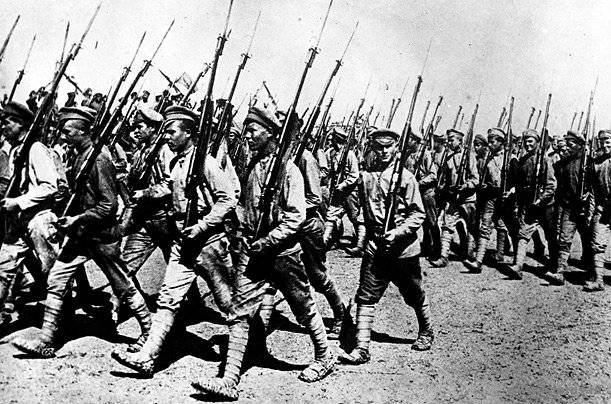
The civil war in Russia has become a tragedy for the entire population of the country. The confrontation encompassed all segments of the population, entered into every home. Kuban was not an exception, where the confrontation involved the Cossack and non-resident population. The first battles took place in early January, 1918, near the city of Ekaterinodar and ended with the defeat of Bolshevik supporters. In January, 2018 will mark 100 years since the start of this tragedy.
I do not pretend to consider in detail all aspects related to those distant events, but I will try to examine the readiness of the military units of the opposing sides at the initial stage of confrontation. It should be noted that at this time interval, the confrontation engulfed the soldiers' masses, who were mainly on the side of the Bolsheviks, and the Cossack formations, who were trying to resist the aspirations of the leaders of the Bolsheviks. The Kuban Cossacks did not yet understand the threats that arose in front of him as one of the estates to be liquidated, and tried to defend their traditional rights. Unfortunately, it was expensive.
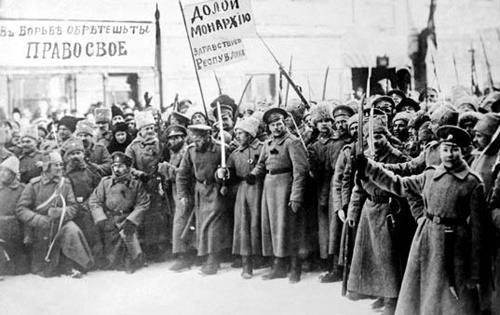
Black Sea was the first under the rule of the Bolsheviks. In this regard, the Kuban Regional Food Committee refused to send convoys with grain to Novorossiysk, which served to increase anti-Kazach sentiment, although the committee was not Cossack in composition.
The Bolsheviks, guided by the decisions developed at the first conference of the party organizations of the Kuban and the Black Sea region, held on November 25-26 on November 1917 in Novorossiysk, focused on the formation of the Red Guard detachments and the strengthening of work in military units returning from the front. The head of the Bolsheviks, A.A. Yakovlev offered to go to Trabzon for troops, to immediately move to the Kuban. This decision was unanimously made.
At the end of December 1917, meetings of military workers were held in the villages of Crimean and Primorsko-Akhtarskaya. They make decisions on the transition to active struggle with the regional government. By the end of 1917, the power of the Kuban government extended only to Ekaterinodar and the villages closest to it.
The 1917-1918 events have shown the inability of the democratic forces in the region to resolve economic and political issues by peaceful means. Around the issue of land, passions were seething, but it was resolved only in favor of the Cossack part of the population, which meant attempts to establish a dictatorship. Rent speculation has deepened the split in society. The intensity of political passions led to the fact that most political parties and movements saw the possibility of their existence only in support on an armed basis. The process of militarization of parties began. From local clashes, the parties shifted to a large-scale civil war.
January 12 The 1918 of the year in the stanitsa of the Crimea by the Bolsheviks decided on the assault of Ekaterinodar. Their forces, according to the chieftain Vyacheslav Naumenko, were up to 4000 people. The provincial government could oppose them around 600 fighters with four guns.
The opposing side was not idle. I will give an assessment of the historian D.E. Skobtseva: “A member of the government for military affairs N.M. Ouspensky began to put together parts of Kuban volunteers. In a hurry, he conducted a provision on service in the Kuban volunteer detachments through the Government Council. A decent content was determined for the volunteers, the military regulations were adjusted, the regulation on order production, on discipline, on revolutionary field courts, etc. was revised. ”
The active formation phase of the first divisions began. The author mentioned above noted: “By the end of the Christmas time, there were already several Kuban volunteer detachments that took the name of their chiefs: troop foreman Golaev, Colonel Demenik and others. At the same time, the initiative and popularity of bosses was of great importance.
At the end of January, the 1918 of the year, under Enem and the Gheorghe-Afipsky struggle, assumed a large-scale character. Skobtsev noted: “... three directions of the Bolshevik offensive on Yekaterinodar were defined: the Caucasus, the Tikhoretsk and the Novorossiysk — along the main railway lines. At first, Novorossiysk turned out to be the most stormy - led by “the Minister of War of the Novorossiysk Republic,” Ensign Seradze. The battle began at the very approach to Ekaterinodar, at the junction Enem. Galaev and Pokrovsky came out against Sieradze.
In the first battle under the station Enem the Bolsheviks suffered a serious defeat. During the battle, military foreman P.A. Galaev shot the Junior Red Guard commander Alexander Yakovlev and was immediately killed himself. An interesting fact is that Yakovlev during the First World War served as a supplier of uniforms for the needs of the army and was not a professional commander. During one of his trips in the area of the city of Molodechko, a grenade flew into the window of the carriage where he was stationed, the junker was wounded, and then he was treated on the Black Sea coast. After the events of 1917, he was sent by the Bolsheviks to Novorossiysk.
The second fight also had no success. Appointed instead of Yakovlev, left SR, Ensign Sieradze was captured and died of wounds in a military hospital.
In Novorossiysk, several armored trains were prepared for an offensive against the capital of the Kuban. The number of Red Army men, according to Soviet and émigré specialists, was about 4000 people. Supporters of the regional government threw no more than 600 Cossacks against this group. A Cossack cavalry and several guns were thrown against the armored trains.
The result of this operation is impressive. The Red Guard on armored trains with artillery was defeated, and most of its participants fled: “The Bolsheviks fled, leaving numerous trophies and the mortally wounded commander Seridze on the battlefield. Here, in a battle near the departure of Enem, a girl - ensign Barkhash died. Pokrovsky was a triumph of the Cesarean type. ”
Thus, it turned out that the Cossacks were more prepared for the conduct of hostilities, and the Cossacks had a much higher motive for defending their land. In addition, the level of commander training among the leaders of the Bolsheviks was very doubtful.
By the performance of the Bolsheviks, the population of the Kuban reacted negatively. The gathering of the inhabitants of the village of Pashkovsky condemned this action. The Cossacks of the villages of Voronezh, Platnirovskaya, Novotitarovskaya and others expressed their support for the regional government. The villagers of Kushchevskaya refused to submit to the authority of the soviets.
The first attempt of supporters of the Bolsheviks to seize power in the capital of Kuban failed. A new phase of the escalation of the civil war has begun. To resupply weapons the Novorossiysk Executive Committee continued disarming the parts of the Caucasian front that were passing through the city.
An attempt to agitate among seven thousand soldiers in the capital of the Black Sea province about the second appearance led to a split in their ranks. Soldiers of the 22nd Varnavinsky regiment and 41st artillery division agreed to participate in the struggle against the regional government. An active role was played by the sailors of the Black Sea fleet. At the request of the Novorossiysk Committee of the Bolsheviks, a detachment F.M. arrived from Crimea Karnau-Grushevsky.
The Kuban-Black Sea Military Revolutionary Committee received weapons from the Military Revolutionary Committee of the Caucasian Army, the Central Executive Committee of the Navy from Kerch, Sevastopol, Odessa. Communication was established with Armavir and Tikhoretskaya for the formation of a new front against Ekaterinodar.
The base of armed resources for the new assault on the Kuban capital was created. And support was carried out in all directions. Supporters of the Cossacks did not have such a broad base, the industrial areas of Russia were under the control of the Bolsheviks. There were no ammunition, small arms, ammunition, military equipment and ammunition.
On the one hand, we see excellent team cadres among the opponents of the Bolsheviks, and on the other, the lack of material support for the hostilities.
The situation among the supporters of the Bolsheviks was completely opposite. And the time was not long in coming, the next stage of the armed confrontation began, which ended in the spring of 1918, with the defeat of the anti-Bolshevik coalition in the Kuban. The process of accumulation of forces began again, which grew into a confrontation in the summer of 1918, when the Volunteer Army together with units of the Kuban Cossacks took complete control of the territory of the former Kuban region.
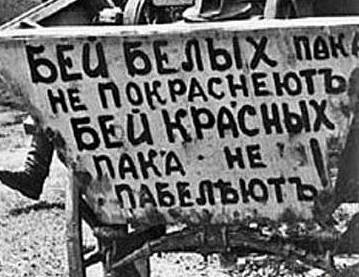
White-green 20-ies
Most of the Kuban, tired of the war, supported the Bolsheviks in the spring of 1920, the year. Peasants and workers joyfully greeted the Red Army, and the Cossacks maintained a benevolent neutrality. Piluk and Savitsky, the leaders of the “Green Army” who rebelled against Denikin, hoped for the moderation of the Bolsheviks, the agreement of the socialist parties, the granting of autonomy to the Cossack regions. It seemed to them that the Bolsheviks would not introduce a system of military communism in the Kuban. A peculiar situation arose in the Sochi and Tuapse districts, where the Committee for the Liberation of the Black Sea Region, headed by Social Revolutionary Voronovich, created the Black Sea Peasant Republic, fighting against both the Volunteer and Red Army.
In the spring of 1920, only a handful continued the struggle against the Bolsheviks. But by May 1920, the introduction of labor obligations and surplus, the redistribution of Cossack lands and lawless reprisals, the ban on the participation of the kulaks in the elections heightened the atmosphere. At the end of April, the 14-I cavalry division of the 1-th Cavalry Army, formed mainly from former whites, revolted. Knowing about the direction against Wrangel, the division raised a riot in the village of Umanskaya with the call “Down with war, down with the commune!” Near the village of Kushchevskaya, the rebels, led by Colonel Sukhenko, were defeated and scattered.
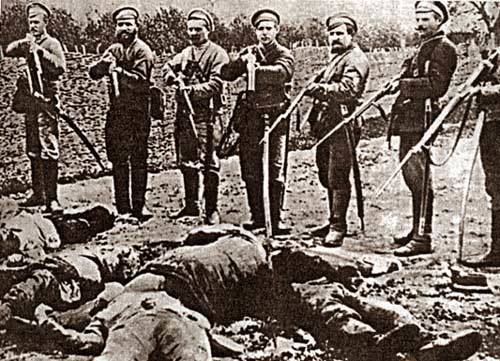
The anti-Bolshevik movement was a wide spectrum of forces. There were agents of foreign states and criminals, a protracted war demoralized many and devalued life. But it is wrong to disregard the heterogeneity and complex alignment of the rebels. The reason for reflection is the opinion of the political worker 1 of the Cavalry Cavalry Army: “Pure banditry is a feature of very few small detachments that have nothing to do with large political organizations.”
The social composition of the white-green was difficult. Usually, officers or Cossacks headed the detachments; there were many former soldiers of the Volunteer Army, refugees from Central Russia. During the seizure of the villages, all Cossacks of military age were mobilized. Relations between the groups of “white-green” are contradictory, they rallied the hatred of Soviet power.
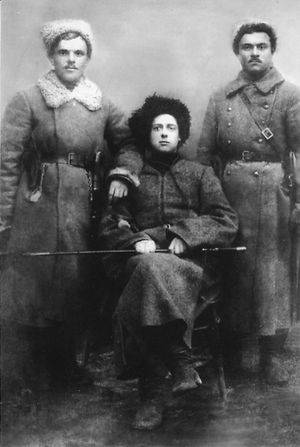
An accurate estimate of the number of rebels, their location and equipment is difficult. The special department of the Caucasian Front believed that the number of large “white-green” units for June-6 in July 1920 increased in the south from 5400 to 13 100 people in 36 units with 50 machine guns and 12 guns. The historian Stepanenko summarized the data; according to him, in August 1920, the counter-revolutionary forces on the Don, Kuban and Terek reached 30 000 people. Military operations had a seasonal rhythm, fading at the time of the sowing season and the harvest, inflaming in autumn and early spring. The next peak of speeches falls on February-March of 1921, the period of aggravation of the food crisis and the turning point in the policy of the RCP (b).
The main centers of the insurgency were Zakubanie (dislocation of the Russian Revival Army), Priazovye (Wrangel landings), Sochi district.
In mid-April, General Fostikov began to create a Plastun regiment and a cavalry brigade near Maikop in 1920. In July, a spontaneous rebellion, caused by the development and seizure of ¾ stocks of hay, swept the stanitsa of the Labinsky department. On July 18, Colonel Shevtsov with a detachment in 600, the sabers captured the village of Prochnopopskaya and announced the mobilization of the Cossacks. The joint forces of the “white-green” Labinsky, Batalpashinsky and Maikop departments reached in mid-July 11 400 people with 55 machine guns and 6 guns.
July 23 military sergeant Fartukov restored ataman rule in the mountainous area of the Maikop department.
The rising insurgencies forced to ask for military assistance. On August 1, the SNK of the RSFSR, the Central Committee of the RCP (b) and the Cheka received a telegram from the Caucasian Bureau of the Central Committee: “The whole Kuban is in revolts. There are detachments led by a single hand - Wrangel agents. Green squads are growing and expanding significantly with the end of the hot pores of field work - around 15 August. In the case of non-liquidation of Wrangel for a short time, we risk temporarily losing the North Caucasus. ”
The authorities took tough measures. 29 July 1920 was issued an order number 1247 on the troops of the Caucasus Front, signed by Trifonov and Gittis. By August 15 residents were obliged to surrender their weapons on pain of confiscation of property and execution on the spot. The same punishment was established for leaving in gangs, promoting "green" or their harboring. The rebels' villages were subject to pacification "by the most decisive and merciless measures, up to and including their complete ruin and destruction."
Information